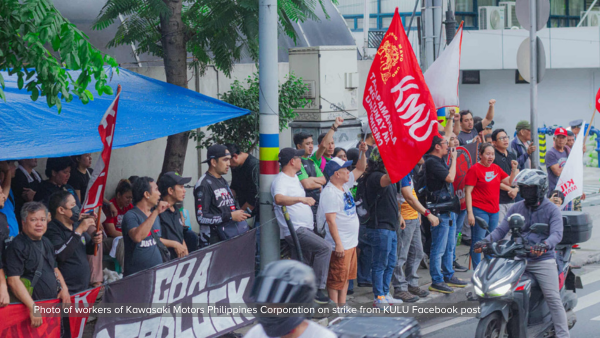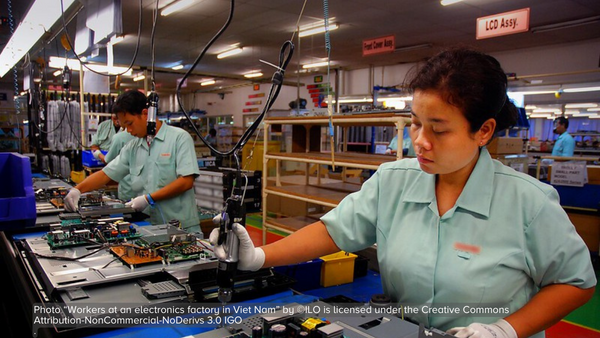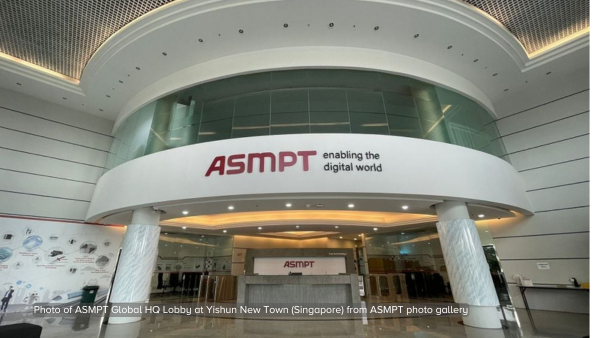Since the beginning of 2010, a startling ten Foxconn employees in Shenzhen tried to end their lives. Eight died, while two survived their injuries. All were between 18 and 25 years old—in the prime of their youth—and their loss should awaken wider society to reflect upon the costs of a development model that sacrifices dignity for economic growth.
On 18 May 2010, nine mainland Chinese and Hong Kong academics issued an open statement calling on Foxconn and the government to do justice for the younger generation of migrant workers. The statement painfully reads:
“From the moment they [the new generation of migrant workers] step beyond the doors of their houses, they never think of going back to farming like their parents. In this sense, they see no other options when they enter the city to work. The moment they see there is little possibility of building a home in the city through hard work, the very meaning of their work collapses. The path ahead is blocked, and the road to retreat is closed. Trapped in this situation, the new generation of migrant workers faces serious identity crisis and, in effect, this magnifies psychological and emotional problems. Digging into this deeper level of our societal and structural conditions, we come closer to understanding the ‘no way back’ mentality of these Foxconn employees.”
China’s development strategy throughout these 30 years not only accomplished an economic miracle. It deepened regional inequalities, prolonged stagnation of wages, and deprived migrant workers’ citizenship and human rights. In the following, we first outline the pattern of internal labor migration under the widening gaps between rural and urban economies. Second, we review the recent cases of Foxconn suicides to probe into the working lives of those who struggle to live on. Finally, we appeal to the concerned public to nurture a sustainable community that respects workers’ rights.
Chinese migrants as low-paid workers and secondary citizens
More than 10 percent of the 1.4 billion people in China, that is, hundreds of millions of “peasants” from the countryside, are on the move. These internal migrants are hailed as China’s new working class. They are preferred as a low cost source of labor and considered better fit for training and adaption to the competitive pressures of the market. In contrast to older state-owned-enterprise workers who seem hopelessly stuck in their socialist mentality and welfare dependency, new generations of peasants-turned-workers are said to be building China’s modernization.
In comparison with global-oriented export processing zones, the vast Chinese countryside is viewed as a wasteland of backwardness. The decollectivization of agricultural production differentiated the rural economy and spurred rising income differences between households. Young people long for a life attuned to the times, and the city is where everything happens. Aspirations for a better future have motivated many from the countryside to seek new opportunities in the cities. The resulting rural-to-urban migration left villages associated with stagnation.

Under the direction of the Chinese authoritarian state, China’s export-oriented economic model proved it could deliver economic growth. Asian-invested enterprises and domestic manufacturers on mainland China have risen quickly to become contractors and sub-contractors to Western multinationals, depending on the advantage of low-paid migrant workers.
The rural experience of these new workers is oftentimes irrelevant or even considered a detriment to the manufacturing process. Migrants must liquidate their past and become a blank slate receptive to training. To quicken the transformation, employers draw attention to migrants’ deficiencies and missing skills. Furthermore, with hundreds of millions competing for jobs, migrants feel a perpetual sense of anxiety, continuously reminded of their replacability.
Workers-of-rural-origins are discriminated culturally and materially. Their younger cohorts in particular find themselves insecure, neither belonging to the city nor feeling able to return to a livelihood in the countryside. Some have their employment histories brought to an end from work injuries. Still some others, under desperate conditions, have taken their own lives. The priority given to economic development in China has reached a critical point where we must reflect on the deeper costs of a growth-above-all-else industrial policy.
Riding Foxconn’s “suicide express”?
Amid media reports of suicides of young Chinese workers, public discussions about corporate management, workers’ socio-psychological well-being, and international supply chain labor responsibility have been getting intense.
An online Chinese news database newly created in January 2010 raised a question, “Foxconn employees—why haven’t they held back from killing themselves (Ppsj.com)?” Another report dated 9 April 2010 asked somewhat more urgent, “Who can bring the Foxconn ‘suicide express’ to a halt (News.163.com)?”
Foxconn Technology Group, a Fortune 500 company, is the largest final assembling-supplier in the global electronics industry. The Taiwanese company announced consolidated net profits of NT$18 billion (US$568.73 million) for the first quarter of 2010, increased 34.8 percent on year. The company employs over 800,000 staff worldwide, mostly in China. In Shenzhen City, Foxconn’s Longhua Science and Technology Park houses some 300,000 workers in one single campus. Most of the Foxconn employees are young migrants from within Guangdong and other interior provinces. These workers assemble iPhones and iPads efficiently. A tagline of Foxconn’s worldwide recruitment advertisement reads, “The Foxconn brand is the talent of its workforce” (in original Chinese, rencai shi Hon Hai de pinpai). The evidence suggests, unfortunately, the company is losing its talent. Given recent events, the term used to refer to employees, “the people of Foxconn” or fu kang ren, rings with dark irony as the Chinese, literally translated, means “wealthy” and “healthy” people.
A snapshot of Foxconn’s death toll
18 June 2007
Hanging in her dormitory toilet?
Hou, a 19-year-old Hunan worker, was found hung to her death in the toilet of her dormitory room. She entered Foxconn in the summer of 2005 after leaving middle school in Huihua City.
Hou’s parents were shocked upon hearing the tragic news. Two weeks before Hou’s death, she had phoned them to share her plan to quit soon after receiving her wages (New China Net, 27 June 2007).
1 September 2007
Dying from overwork?
Liu Bing, 21-year-old, died two hours after resigning from Foxconn. He left because the work was “too noisy and unbearably exhaustive.” His job responsibility was loading and unloading heavy goods. Overwork is the suspected cause of his death (Southern Metropolis Daily, 6 September 2007).
16 January 2009
Unbearable work pressure?
Feng, a 23-year-old university graduate, jumped from a 14th floor building to his death. The police found a suicide note in his dormitory, “Too much work pressure; unstable emotions.” Foxconn responded that Feng’s death might be related to a bonus reduction in connection with work productivity (Southern Metropolis Daily, 17 January 2009).
16 July 2009
Unmanageable consequence as a result of “Apple leak”?
Sun Danyong, a 25-year-old Yunnan graduate from the Harbin Institute of Technology, worked as an administrative staffer at Foxconn’s Shenzhen Longhua plant since 2008. On 16 July 2009, Sun, who was held responsible for losing one of 16 prototypes of Apple’s fourth-generation (4G) iPhone, jumped from the 12th floor of his apartment building to his death. Foxconn issued a statement: “Regardless of the reason of Sun’s suicide, it is to some extent a reflection of Foxconn’s internal management deficiencies, especially in how to help young workers cope with the psychological pressures of working life at the company” (Li Jinming, Foxconn’s General Manager, quoted in Southern Metropolis Daily, 21 July 2009). The “psychological pressures” referred to included being suspected of stealing, interrogation and solitary confinement by security officers, and having his home searched. He was allegedly beaten and humiliated. His final online chat with his friends revealed both his agony and relief, “Thinking that I won’t be bullied tomorrow, won’t have to be the scapegoat, I feel much better (Southern Metropolis Daily, 21 July 2009).” Apple, one of the direct buyers of Foxconn products, released a press statement: “We are saddened by the tragic loss of this young employee, and we are awaiting results of the investigations into his death. We require that our suppliers treat all workers with dignity and respect (quoted in CNET News, 21 July 2009).” Commentators suggested that Apple’s secretive culture and business approach—creating and suspending great surprise in the market and thereby adding sale value to its products—have sent extreme pressure all the way down its Chinese suppliers.
23 January 2010
Fell to his death but why?
Ma Xiangqian, a 19-year-old Henan-native, entered Foxconn in November 2009, was found dead lying near the stairway of a factory dormitory on 23 January 2010. Despite management’s first conclusions otherwise, an autopsy confirmed the death was due to falling (People’s Daily, 13 February 2010). Ma’s two sisters insisted that their brother was beaten to death at work because “there were scars on his dead body—he was black and blue in the chest area, had blood in his mouth and nose, and a big wound in his forehead” (Guangzhou Daily, 26 January 2010). Foxconn refuted local media’s reports that Ma had been assigned to cleaning toilets after he damaged equipment (due to his inexperience).
11 March 2010
Financial stress?
Li, in his early 20s, jumped from a 5th floor dormitory after his Chinese New Year wages were stolen.
17 March 2010
Attempting suicide
Tian Yu was rescued after she jumped from her dormitory. Journalists have been trying to contact her but no further details were disclosed.
29 March 2010
Attempted suicide
Liu Zhijun, a 23-year-old Hunan graduate from Xiangtan University, jumped to his death from the 14th floor dormitory. He joined Foxconn in August 2009 (China Daily, 31 March 2010).
6 April 2010
“Too much work pressure,” testified a female worker survivor
Rao Leqin, an 18-year-old Jiangxi worker, jumped from her 7th floor dormitory but a tree broke her fall. She had worked in Foxconn for just a month.
Reports first alleged that Rao was troubled by a romantic relationship. When interviewed at the hospital, she clarified that she was “under work pressure.” She added that she did not have boyfriend.
Foxconn extended a typical work day to 12 hours. Rao said, “Morning assembly starts from 7:45 a.m. The working hours are very long. I get off at 6:50 p.m.…Recently I’ve been put on to the night-shift which I couldn’t quite get used to it.” Her job was to inspect parts and components under the microscope. Rao believed that it was difficult for her to resign without losing her wages. “At that time [when she attempted suicide], I had only 15 yuan left. Earlier, I borrowed 50 yuan from my co-worker. I was running into deep [financial] problems,” she said (New China Net, 26 April 2010).
7 April 2010
Attempted suicide
Ning, an 18-year-old Yunnan worker, jumped to her death.
6 May 2010
Psychiatric breakdown?
Lu Xin, a 24-year-old Hunan graduate from Xiangtan University and an alumnus of Liu Zhijun (who killed himself on 29 March 2010; see above), jumped to his death from the 6th floor. He entered Foxconn in August 2009. Lu allegedly suffered from a psychiatric disorder. According to his friends, Lu showed symptoms of delusions like “being followed and threatened [by someone who wants to kill him].” He was on the verge of personal breakdown around the May Day Holiday (on the 1st May International Labor Day, 2010). Commentators suggested that Lu’s mental problems were triggered and related to work pressure (Southern Metropolis Daily, 7 May 2010).
Foxconn brought in monks in an attempt to release the souls of the deceased employees from suffering and to dispel misfortune (Southern Metropolis Daily, 12 May 2010). The conduction of the religious rite, however, could not stop Zhu Chenming (a 24-year-old Henan female worker) and Liang Chao (a 21-year-old Anhui male worker) from jumping off buildings on 11 May 2010 and 14 May 2010 respectively. Both of them were certified dead onsite. Local media reports state that Foxconn was willing to provide financial aid to the victims’ families on the condition that they signed “confidentiality agreements” with the company with regard to the deaths (China Economic Net, 20 May 2010).
Dying young: personal or workplace problems?
Foxconn spokesperson Edmund Ding, in response to the public outcry of “nine consecutive jumps” between January and mid-May 2010, told the media that some of the workers had had “personal problems” (BBC, 18 May 2010). Accordingly, the company established a management center and set up a 24-hour hotline service to help employees “maintain mental health” (China Daily, 13 May 2010). Senior management also invited a group of psychologists to its Shenzhen Longhua plant for consultation. Taking the experts’ advice, the workplace union would strive to cope with “the psychological and emotional needs” of its huge number of young employees (Southern Weekly, 12 May 2010)
We question Foxconn’s framing of the suicides as isolated, individual cases. The corporate prescriptions on comforting and caring the needy employees have left key workplace-based social problems unattended.
First, despite the high status as China’s biggest exporter, Foxconn pays its low-level workers in Shenzhen the legal minimum wage at 900 yuan/month. Ma Liquan, a former Foxconn worker and sister of Ma Xiangqian (who died in January 2010, see the previous section), informed China Central Television (CCTV, 11 May 2010): “After deducting mandatory social securities, we earn only some 800 yuan a month. No one seems to force us….and yet we’ve no choice but to do overtime work.” A work shift typically lasts from 10 to 12 hours. Workers must shoulder the burden of low pay and long working hours.
Second, the shop floor environment at Foxconn is tense and atomized. Each frontline production worker specializes in one specific task and performs monotonous, repetitive motions. The work is intense and work pace quick. Between April and early May 2010, a journalist conducted an undercover investigation by working in the Foxconn Longhua plant in Shenzhen for 28 days. He found: “Workers are feeling exhausted to the extent that they envy their injured co-workers. Why? They can take some rest from work as they are recovering (Southern Weekly, 12 May 2010).” Foxconn workers described themselves not as human beings but as a cog in a machine.
Third, migrant workers feel that they generally lack affective and social support. There is no exception at Foxconn. Senior management admits that the turnover of lower-level workers is fairly high (Global Times, 13 May 2010). While some workers get to know their dormitory roommates quite well, others find them complete strangers. A few choose to rent small apartments with friends and relatives outside the factory as far as they can afford them. In their everyday life, they encounter numerous difficulties to access to basic community services because they are not recognized as urban residents. Under the decades-old household registration system, migrants are classified as “floaters,” whose permanent residency is in the countryside. They are marginalized workers within and beyond the “Foxconn City.”
Foxconn is one of the members of the Electronic Industry Citizenship Coalition (EICC) that pledges itself to uphold high labor and social standards in the global electronics supply chain. The company leaders need to work concretely with the local governments and the civil society organizations to implement both the labor law and the industry-level code of conduct.
At the time of writing—as of 21 May 2010—unfortunately, the 10th Foxconn employee jumped to his death just before 5:00 a.m. local time; he is only 21 years old (Reuters, 21 May 2010).
Corporations and governments must act responsibly now
Concerned labor group, China Labor Watch, called for an overhaul of conditions for Foxconn’s production line workers, after an investigation prompted by the suicide cluster (China Labor Watch, 18 May 2010). On 25 May 2010, Hong Kong-based Students and Scholars Against Corporate Misbehavior (SACOM) protested at Foxconn’s Hong Kong office to demand the company to safeguard workers’ rights and dignity.
The Foxconn suicides have received much media attention and yet many other Chinese workers toil under terrible conditions. It is common knowledge that workplace accidents and even deaths are routinely covered up. Image-conscious global buyers and their suppliers sometimes show some concern for workers’ treatment. But often, this seems only business-as-usual done in the currency of the rhetoric of corporate social responsibility. President Hu Jintao and Premier Wen Jiabao have emphasized social stability and harmony in addition to achieving national economic objectives. A more balanced urban-rural development and people-centered policy is indeed much needed. We are concerned about the increasingly fragmented, precariously employed new working class. In the dominant discourse of development, human sacrifices have been considered inevitable if not outright necessary. Without stronger protections for Chinese migrant workers’ rights to unionize and strive for decent work, it seems almost certain we will witness a growing list of deaths.
25 May 2010, SACOM and Hong Kong labour groups protested at Foxconn’s headquarters in Hong Kong. Click here to see footage.
Mainland Chinese university students have newly created a website (in Chinese, guan ai fu shi kang gong you) to share their care and concerns about Foxconn workers. A theme song, Grief, is dedicated to the lost young lives.









